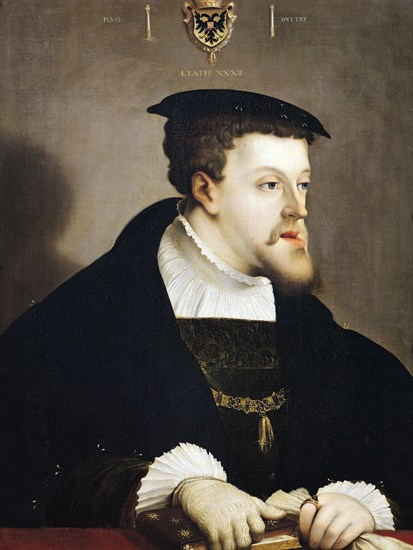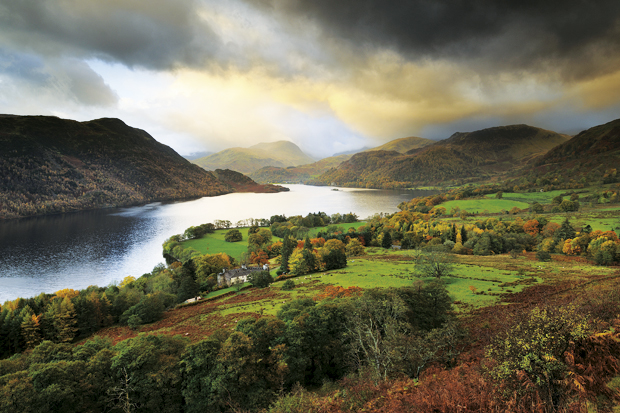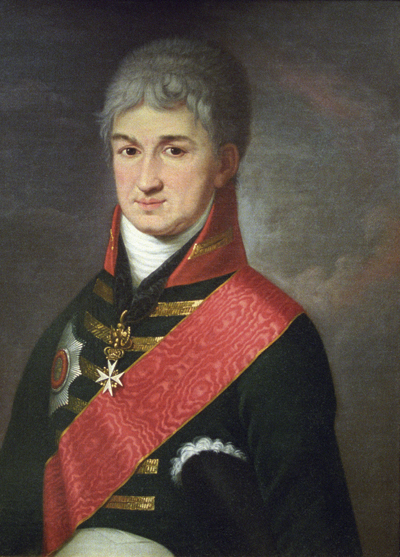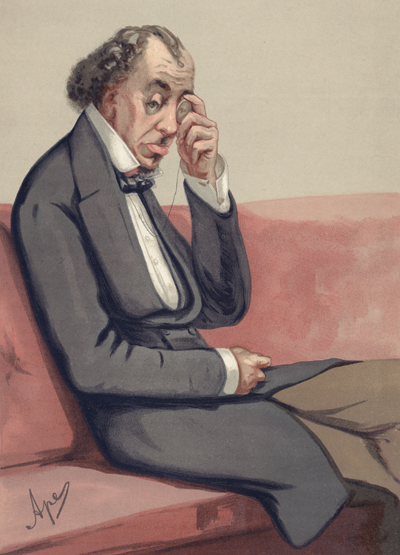Why do we know so little about the Habsburg empire, given that it is the prime formative influence on modern Europe? Its pomp gave us the art, music, literature and pageantry of our high culture; its relationship with the Ottoman East and burgeoning European protestantism drew our religious and our political maps; its collapse fomented the nationalisms that shaped the 20th century across Europe.
A popular abbreviation on the internet is ‘tl; dr’. It stands for ‘too long; didn’t read.’ There’s space for another one that would come in especially helpful for the Habsburg empire: ‘tc; du’ — ‘too complicated; didn’t understand’. It’s much easier to teach schoolchildren about Our Island Story, or the first world war, or the nastiness of Nazis, because at least superficially these are containable subjects. There are baddies (Nazis), there are decisive battles (Waterloo), there are comprehensible treaties (Versailles) and there are what look like reasons for things to happen (railway timetables).
The Habsburg empire, on the other hand, has none of these consolations. Most of the places involved are now called something else, and the empire was cobbled together out of any number of rebellious, feuding or indifferent duchies, grand-duchies, principalities, margravates, palatinates and what have you. Most of the principal actors had weird German names and extraordinarily complicated titles (even at the tail end of the silliness, Franz Joseph I boasted 16 titles including ‘King of Jerusalem etc.’, ‘Margrave of Upper & Lower Lusatia, in Istria’ and ‘Grand Voivode of the Voivodship of Serbia, etc. etc.’), not to mention extreme difficulty in numbering: ‘Philip the Handsome’ was Philip I of Castile, Philip II of Luxemburg, Philip III of Brabant, Philip IV of Burgundy, Philip V of Namur and Philip VI of Artois. And — Simon Winder tells us — he was ugly.
It wasn’t even one empire, quite. For 364 years any given Habsburg-in-chief combined the complicatedly overlapping roles of running the Habsburg family patrimony and the Holy Roman Empire. As for the joys of cause and effect — which at least in a naive reading is what historians labour to discern — the greatest of optimists will retire with a migrainous flickering in the corner of the eye and a Herbert Lom-style twitch. Inconclusive wars, footling territorial swaps, contradictory edicts, aborted negotiations and humiliating U-turns, cock-ups and misunderstandings are the stuff of its decade-by-decade life. As is the case with so many useful conservative institutions, the Habsburg empire worked in practice rather than in theory.
One of the main things the empire did was to prevent the Ottomans from overrunning Europe. Its ups and downs often have to do with whether the Ottomans were busy gnawing at its bum or had their attention distracted for a few decades elsewhere. Like most of the things the Habsburgs did — Winder gently but seriously emphasises that to think of the empire as a rational, centralising authority is completely to miss the point — these distractions were often subcontracted. In the 16th century, for instance, the Uskoks of Senj, who were Christian irregulars, harassed Ottoman shipping on the Dalmatian coast. Their habit of using their victims’ blood to flavour their bread, Winder writes, was ‘another talking point’. The bags full of Turkish noses dispatched from Senj by the Uskoks to Charles V in 1532 may have been one of those presents more fun to send than to receive.
It didn’t help that the Habsburgs were hopelessly inbred, of course. Remember that jaw? Charles V couldn’t eat in public because of it, Leopold I’s jaw was ‘so distended that his mouth would fill with water if it rained’, and — as Winder puts it — ‘the women in portrait after portrait appear to have a sort of awful pink shoe attached to their lower faces’. Some Habsburgs were, almost literally, blithering imbeciles — and Carlos II of Spain (‘could hardly speak, could not eat solid food, was generally carried around […] unable even to start procreating’) shaped history simply by — to the astonishment of those already carving up his territories in their minds — staying not only alive but on the throne for 35 years.
As Winder says in his introduction, even more than most empires, this one was accidental: ‘often the “great events” of the continent’s history were generated as much by the Habsburgs’ uselessness or apparent prostration as by any actual family initiative’. Frequent among the terms with which turns of events are described are ‘fluky’, ‘hopeless’, ‘idiotic’, or ‘disastrous’. Here we see an outbreak of ‘imbecilic mayhem’; there — in the shape of the Pragmatic Sanction, intended to allow Charles VI’s daughter Maria Theresa to inherit — we meet ‘the most useless document ever dreamed up’. Of the Habsburg navy, doomed to rot at anchor unused, we’re told, ‘the only role of small navies is to be sunk by bigger ones’.
So, as will be immediately clear, this is almost an anti-history. Winder approaches his dementingly enormous subject more in the spirit of an amused and irreverent tourist, as his subtitle suggests: as much travel writer as historian. ‘The more we read about the past,’ he marvels at one point, ‘the more completely odd it appears.’
Danubia is framed by the author’s peregrinations around the Mitteleuropean sprawl of the vanished empire — from the dismal flatlands bordering the Danube to tiny towns in Transylvania. He visits dusty old museums (in one he finds a flap of human skin) and decaying fortresses. He observes endless suits of armour, eats
stomach-churning omelettes, stumbles on a children’s rock festival in a town in Serbia and sighs frequently for love of the town of Brno. It’s all very Bill Brysonish or even, at times, Geoff Dyerish (though Winder’s casual prose is more actually casual than Dyer’s).
Winder falls with delight on bear-moats and plague columns, on kitsch memorials and overblown heraldic displays, on bonkers fortresses (designed to absorb invading troops like honeycombs) and ‘richly enjoyable’ aspects of warfare (notably the one preventing Napoleon from crossing the Danube, which floated an entire wooden mill, on fire, downstream towards his pontoon-builders). He digresses at will on the usefulness of pacifying killer whales with tofu, the unusual pack of playing cards with which he played Happy Families as a child, and the desirableness of writing a book on zoo architecture.
You haven’t the faintest hope, reading Danubia, of remembering in detail what actually happened — or even of grasping a well-proportioned overview. And the author suffers from the same problem. Catching himself wondering what Charles VI thought when he got up in the morning, Winder writes: ‘This may just be a sign of the madness which is creeping in while trying to keep this book under control.’ Later, he confesses to ‘needing psychiatric assistance by now on Habsburg issues’.
Yet one of the sly contradictions here is that an exceptional amount of reading and travel lies behind the showily teen-agerish dismissal of this monarch or that treaty. Winder plainly knows his way around the empire: he’s not only more knowledgeable than he makes out about military history; he’s also well-read and clever about art and music. Sometimes the winsomeness is trying. A down side of approaching history as a tourist is that, by definition, you never quite inhabit the period. There’s a sort of chronological orientalism to all this pointing and laughing. But at the same time it is very funny.
And — as Winder knows — his subject is also very serious. Almost everything that went wrong in the last 100 years came out of this. He leaves his remorselessly anti-heroic narrative in Heroes’ Square in Vienna. The square was never completed, and is now a car park, ‘subject to gusts of wind which whirl together dirt and discarded plastic cups’. Overlooking ‘two bathetic statues, one of Prince Eugene and the other of the Archduke Charles’ is, still undemolished, a Nazi-era flak tower. ‘Heroes’ Square was always a miserable place.’
Got something to add? Join the discussion and comment below.
Get 10 issues for just $10
Subscribe to The Spectator Australia today for the next 10 magazine issues, plus full online access, for just $10.
You might disagree with half of it, but you’ll enjoy reading all of it. Try your first month for free, then just $2 a week for the remainder of your first year.















Comments
Don't miss out
Join the conversation with other Spectator Australia readers. Subscribe to leave a comment.
SUBSCRIBEAlready a subscriber? Log in